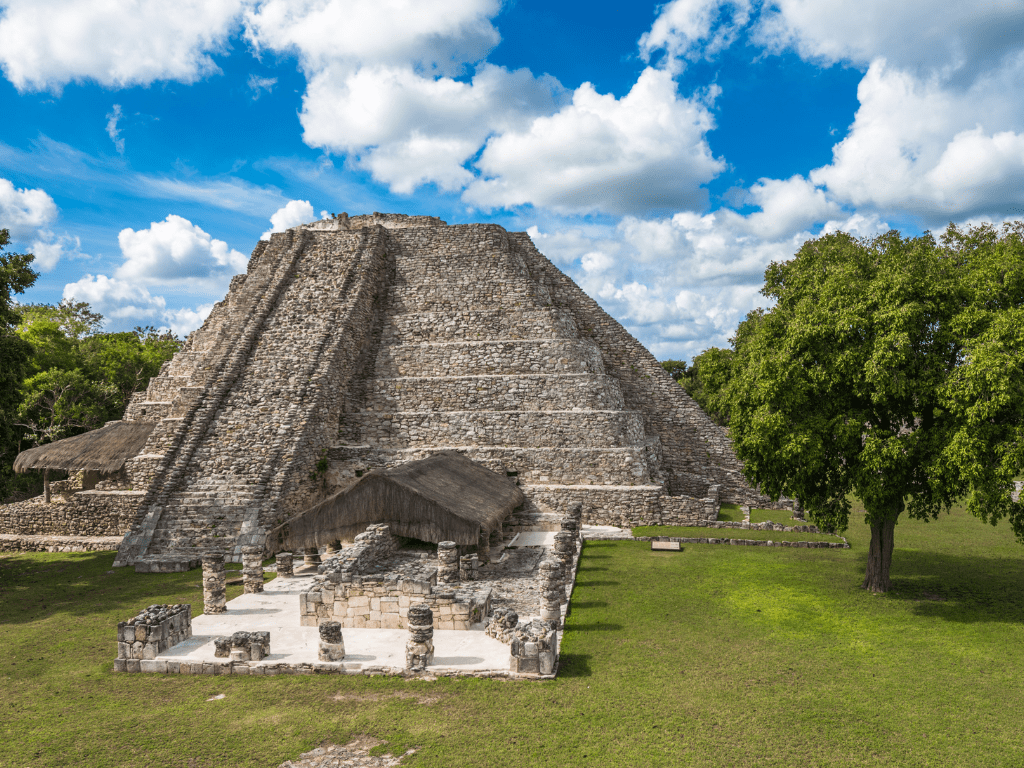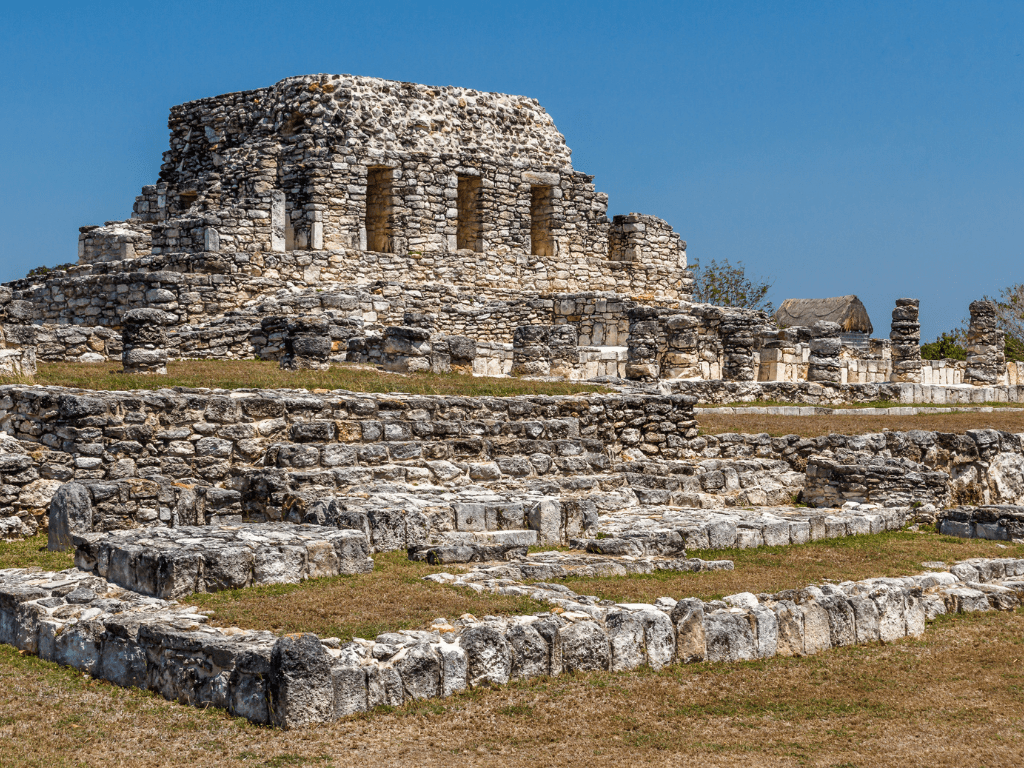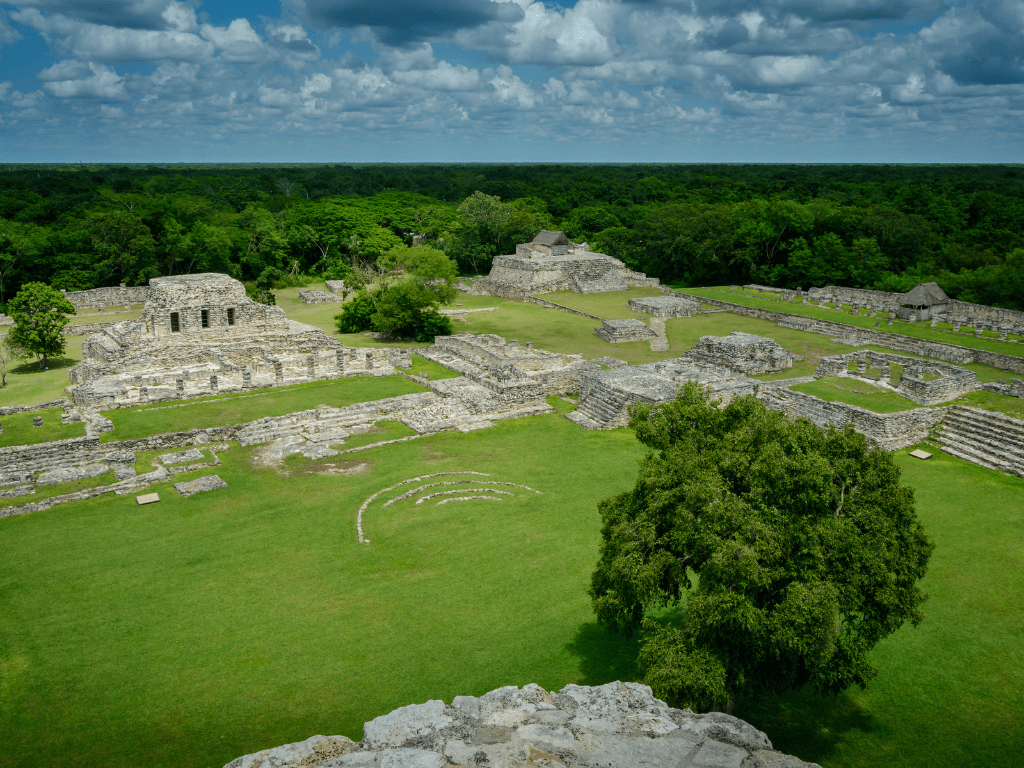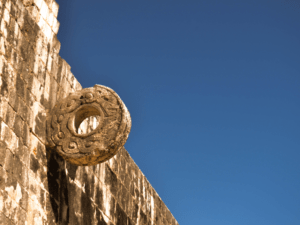Unraveling the Mysteries of Mayapan: A Fascinating Exploration of the Ancient Ruins

Introduction
Mayapan was once a vibrant and thriving city in the Yucatan Peninsula, situated in what is now the modern-day state of Yucatan, Mexico. The city rose to power in the late 12th century after the decline of Chichen Itza and became one of the most prominent cities in the region by the early 15th century. The ruins of Mayapan are significant as they offer a glimpse into the rich cultural heritage and architectural prowess of the Mayan civilization.
Brief history of Mayapan
Mayapan was founded sometime around 1200 AD as a small agricultural village. Over time, it grew into a major urban center with an estimated population of over 12,000 people at its peak.
The city was ruled by a council made up of representatives from various noble lineages, each with their own interests and alliances. Despite occasional internal conflicts, Mayapan thrived for several centuries before finally declining and being abandoned in the mid-15th century.
Importance of Mayapan ruins

The ruins at Mayapan are an important archaeological site that provides valuable information about Maya society during its peak period. They offer insights into various aspects such as architecture, urban planning, agriculture, trade practices, religious beliefs and practices among others.
In addition to providing important historical information, these ruins attract tourists from all over the world who come to marvel at its beauty and significance. By studying these ruins, we can gain a better understanding of our shared human past and appreciate different cultures through time.
Overview of Mayapan Ruins
Mayapan is an ancient Maya city located in the Yucatan Peninsula, Mexico. The site covers an area of approximately 4.2 square kilometers and was occupied between the 12th and 15th centuries AD. The city was founded by the Itzaes, one of the Maya tribes that lived in the Yucatan region.
Location and size
Mayapan is situated about 40 kilometers southeast of Merida, the capital city of Yucatan state. The site is surrounded by a wall with four entrances and contains over 4,000 structures, including houses, temples, palaces, ball courts, marketplaces, and water reservoirs.
Layout and architecture
The layout of Mayapan is typical of other ancient Maya cities with a central plaza surrounded by important buildings such as temples and palaces. However, what sets Mayapan apart from other sites is its unique rectangular grid pattern that divides the city into four quarters or barrios with each quarter having its own central plaza.
Mayapan’s architecture shows a clear evolution from earlier Maya styles with more complex structures featuring colonnaded galleries and decorative elements such as stucco masks on building facades. Many buildings also have corbel-vaulted roofs made from stone slabs that curve inward to support themselves without using any mortar.
Significance in the Maya world
 Mayapan was one of the last major cities built by the Maya civilization before their decline in the late Postclassic period (AD 900-1500). It was also one of the few cities to survive after Chichen Itza’s collapse around AD 1200.
Mayapan was one of the last major cities built by the Maya civilization before their decline in the late Postclassic period (AD 900-1500). It was also one of the few cities to survive after Chichen Itza’s collapse around AD 1200.
As a result, Mayapan became an important center for trade and politics in Yucatan during its heyday. The site has been extensively studied by archaeologists and has yielded important information about Maya society, religion, and politics.
Mayapan’s strategic location at the center of the Yucatan allowed it to control trade routes between the Gulf of Mexico and the Caribbean Sea. It also played a vital role in the unification of Yucatan under one ruler, as well as providing insights into Maya cosmology through its impressive astronomical observatory.
The Great Pyramid (El Castillo)
Description and History
The Great Pyramid, also known as El Castillo, is the most iconic structure at the Mayapan ruins. It stands 25 meters tall and is made up of nine levels with four staircases that lead to a temple on the top.
The pyramid was built between 1200-1450 CE during the Late Postclassic period of Maya civilization. It is believed to have been used for religious ceremonies, specifically honoring Kukulcan, the feathered serpent deity.
Significance in Mayan Culture
The pyramid’s significance in Mayan culture cannot be overstated. Its construction reflects Maya’s advanced knowledge of mathematics and engineering, as well as their devotion to religion.
The pyramid represents the importance of Kukulcan, who was believed to bring fertility and prosperity to the land. Archaeological evidence suggests that human sacrifices were performed on top of the pyramid during important astronomical events.
Unique Features and Design Elements
One of the most unique features of El Castillo is its design elements that reflect Maya’s knowledge about astronomy. For example, during an equinox (when day and night are equal), an unusual display occurs where shadows on one side appear to form a serpent-like shape descending down the stairs from atop toward a large serpent head carved at its base.
Additionally, inside the pyramid are several chambers filled with ornate decorations including statues of Kukulkan carved into low relief stucco covered walls adorned with masks made from jadeite mosaic along with other precious materials such as red shell beads or mother-of-pearl inlaid into stucco forms on doorways or niches which would have been illuminated by natural light streaming through small openings or perforations in walls which formed patterns reflecting days in cycles such as those based upon planetary movements known to the Maya. Overall, the Great Pyramid remains an impressive example of Mayan architecture and serves as a testament to their advanced knowledge and devotion to their religion.
The Observatory (El Caracol)
Description and History
The Observatory, or El Caracol as it is known in Spanish, is one of the most remarkable buildings at the Mayapan ruins. Located near the center of the city, it is a round building that measures over 20 meters in diameter.
Its name means “snail” because the staircase inside it spirals upwards like a snail’s shell. The building dates from the Postclassic period of Maya civilization (around AD 1200-1450) and was likely used for astronomical observations and calculations.
Purpose and Function
The precise purpose of El Caracol is not known with certainty, but it is believed to have been an astronomical observatory. The building was designed so that observers could see out through narrow openings or windows at various points around its circumference. These openings align with key astronomical phenomena such as solstices and equinoxes, suggesting that they were used to track celestial events.
Astronomical Significance
El Caracol’s role in Mayan astronomy may have been related to predicting seasonal changes and calculating calendar dates for religious ceremonies or agricultural activities. It has been suggested that Maya priests would use the building to observe Venus, which was associated with warfare and sacrifice in Mayan culture.
The alignment of certain openings may have also marked significant events such as eclipses or comets. Overall, El Caracol represents an impressive achievement in pre-Columbian astronomy and serves as a testament to the advanced knowledge and skill of ancient Maya astronomers.
The Ball Court (Juego de Pelota)

Description and history
The Juego de Pelota, or ball court, is one of the most distinct and recognizable architectural features of Mayan ruins. The game was played throughout Mesoamerica, with variations in rules and equipment. The court itself is a large rectangular space with sloping walls on either side.
The size and shape varied among different Mayan sites, but at Mayapan it was approximately 66 meters long by 20 meters wide. It is believed that the game was played by two teams of players who used their hips to keep a rubber ball in play while trying to score points by hitting the ball through hoops set high up on the walls.
Rules, rituals, and significance
The ball game held a significant cultural importance for the Mayans. In addition to being a sport, it also had religious and political significance. It is believed that some games were played as part of religious ceremonies, with human sacrifice offered to ensure a bountiful harvest or other benefits from the gods.
In other cases, the game may have been used as a form of diplomacy between rival kingdoms or political factions. The rules varied depending on location and time period, but generally speaking each team had seven players who attempted to pass the ball using only their hips and legs.
Points could be scored by getting the ball through one of several hoops placed high up on the sloping walls at either end of the court. Players wore protective gear made from leather or weaving which protected their hips from injury during gameplay.
Unique features
One unique feature of the ball court at Mayapan is its location within the city’s defensive wall complex. This suggests that defending against invading forces was an important consideration for those who planned out this city’s layout. Another unique aspect of this particular court is the presence of a small stone structure located near one end of the court.
This structure, known as the temple of the jaguar, is believed to have been used for conducting religious ceremonies in conjunction with ball games played on this court. The temple contains carvings depicting scenes from ball games, as well as images of a jaguar god who was believed to protect players during gameplay.
The ball court at Mayapan is an impressive example of Mayan architecture and culture. Its size and unique features demonstrate the importance that this game held for Mayan society as a whole.
The Palace (Palacio de los Estucos)
Description and History
The Palace is one of the largest structures in Mayapan and was built during the Late Postclassic period. The main part of the palace is rectangular, measuring approximately 60 meters by 25 meters.
It is made up of several rooms with small doorways connecting them. The walls are decorated with intricate stucco sculptures depicting various animals, including jaguars, snakes, and birds.
The Palace was likely used by Mayapan’s ruling elite as a residence and administrative center. It is possible that it also served as a ceremonial space for important events.
Architectural Features
One of the most striking features of the Palace is its stucco sculptures. These were created by first carving an image into the wall and then covering it in multiple layers of plaster mixed with crushed seashells.
Once dry, the sculpture would be painted to create a vivid, colorful image. The Palace also features vaulted ceilings made from masonry arches which allowed for large open spaces without needing columns or supports.
Functions of the Palace
The Palace served as both a residential space for Mayapan’s rulers and an administrative center for government officials. It was likely here that decisions were made regarding trade agreements, taxation policies, and military strategies.
In addition to being used for political purposes, it is possible that the palace was also used for religious ceremonies or other important events such as weddings or funerals. Overall, the Palacio de los Estucos serves as an impressive testament to Mayapan’s architectural achievements and provides valuable insight into their political and social structures during this time period.
The Market Place (Mercado)
Description and History
The marketplace, or Mercado, at Mayapan was a bustling center of commerce where traders from all over the region came to buy and sell goods. The market was located in the northeast corner of the city and covered an area of approximately 4 hectares.
It consisted of numerous small stalls arranged in a grid pattern with narrow aisles between them. The Mercado was surrounded by high walls with several entrances to keep order.
Archaeological evidence suggests that the Mercado was built during the Late Postclassic period, which lasted from approximately AD 1200 to AD 1450. This makes it one of the oldest marketplaces in Mesoamerica.
Commercial Activities that Took Place
The Mercado was a hub for trade and commerce for people from different parts of Mexico at that time. Farmers brought their produce to sell such as maize, beans, squash, chilies, tomatoes, fruits like papayas and pineapples as well as cotton blankets and textiles made by women in their homes. Artisans also brought their wares to sell such as pottery vessels painted with intricate designs or carved figurines made out of jade or obsidian.
The marketplace was an active site for bartering where buyers could haggle over prices with sellers until they reached an agreement. Oftentimes these transactions included trading goods instead of using currency.
Conclusion
The Mayapan ruins offer great insight into ancient Mayan civilization including how they traded goods through the marketplace at Mayapan. The bustling activity within this center must have been a central gathering place for locals who clearly placed great importance on trade within their society. The ruins provide us with a glimpse into how valuable trade relationships were among early societies; one can only imagine what kind of discoveries remain hidden beneath these ancient ruins! Please keep in mind the Yucatan is scattered with Mayan ruins. Check out our list of the 8 most important Mayan ruins.


